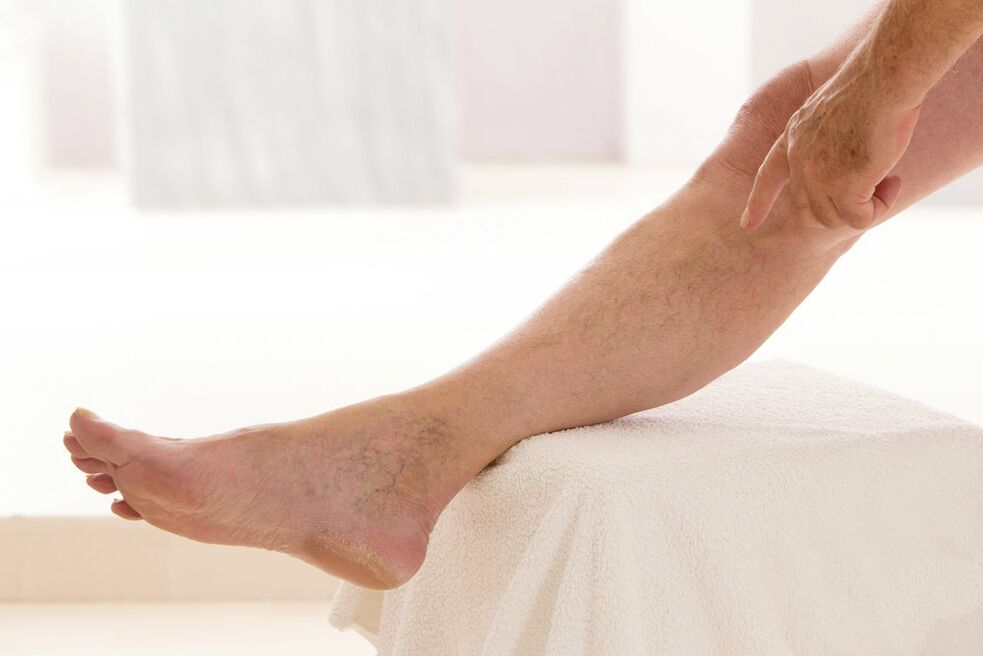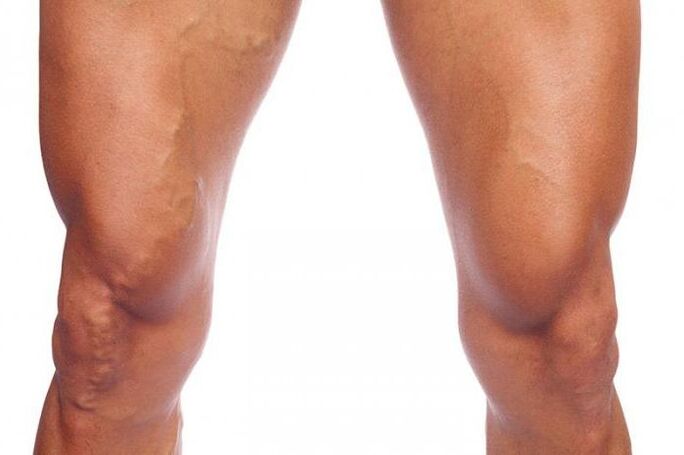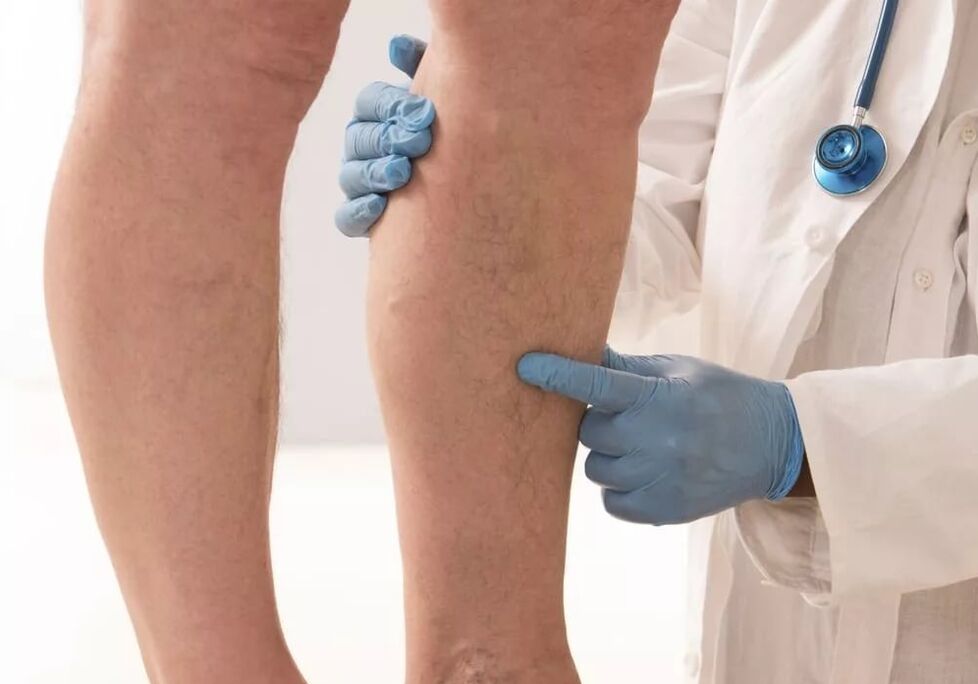The task of effective treatment of varicose veins in the legs is becoming increasingly important. During the development of civilization, humanity has not learned to cope with this problem, which is not just a cosmetic defect. After passing the initial phase, varicose veins begin to feel felt with pain, swelling, dermatitis, ulcers.
At risk of developing varicose veins, people who undergo long static loads (in a fixed position), suffering from overweight and lead a sedentary lifestyle. The number of cases of disease detection in adolescence and even childhood increases. A major impact on the onset of the disease is practiced by one profession: varicose veins develop in 80 % of teachers, 70 % of tribal drivers, 85 % of sellers. But managers are at risk in only 20 % of cases.
Causes of development and symptoms

The main reason for developing varicose veins is, quite strange, progress. People have less and less need to move. And this is fertile soil for stagnant manifestations, which include varicose veins. The disease refers to cardiovascular and in official medicine, a whole direction is given to IT-Flebology, which studies, including varicose veins in foot, whose symptoms and treatment are well studied as part of international research.
The rhythmic function of the heart creates in the body the change in pressure, due to which blood circulation occurs. From the heart, the blood "scatters" along the arteries and capillaries, returns to the veins, but when rising along the legs up, it must overcome gravity, and the impulse from the heart is not an assistant, because almost all energy has gone to connect the blood through small blood vessels. If the movement of blood along the deep contour is difficult, there is a discharge on the outside, which does not have around the strong muscle frame, so it extends easily during the congestion.
For such a situation, nature predicted three compensatory mechanisms that help raise blood up:
The causes of varicose veins of the lower extremities are heterogeneous and unclear. It is difficult to emphasize a special, released development because a whole complex is involved. The main factors that interfere with the normal blood flow, and related - the development of venous wall weakness are considered:
Symptoms of the disease
Signs of varicose veins in the legs are known to many, this: this:
Traditional treatment methods
At all stages of the disease, medicines that stabilize the structure of the venous wall and increase its tone are widely used. In severe forms of venous insufficiency, anticoagulants are used. Inflammation and trophic ulcers can be treated with antifungal and antibacterial agents, and in cases of venous eczema and dermatitis, antihistamines are used, with edema - diuretics providing potassium. Non -steroidal anti -inflammatory drugs are used for pain and convulsions. External used gel and creams based on special medicines.
Conservative (non -operative) treatment methods, applied in time and carefully organized, make it possible to achieve cure or improvement in most cases, which justifies this tactic as starting for all patients. As a result of a study conducted at Kazan State Medical University, it was found that in adolescence in 15 % of cases, improvement or cure can be achieved, and in 30 % - to stabilize the process. These indicators are much higher than in adult patients, that is, the sooner the conservative treatment is started, the higher the result.
Traditional surgical intervention is gradually required by the methods of minimal invasive surgery, which can only be affected by the "sick" part of the ship. Supreme cuttings are created and special substances are inserted into the lumen of the ship. The consequences of such interventions seem aesthetically pleasing.
Compression sclerotherapy - the introduction of liquid and foamy medication into the vein lumen with its subsequent sponge. Treatment is minimal invasive, does not require general anesthesia and helps to avoid temporary disability. But if the substance accidentally penetrates the deep veins, then there is a risk of thrombophlebitis.

Laser coagulation is one of the methods of so -called "office surgery", after which there are no disability periods. The inner wall of the vein is affected by laser radiation, as a result of which the vein "closes".
Phlebectomy is a painless surgery to remove an expanded vein, produced through a puncture. After surgery, only bruises remain, which pass within a month.
Endoscopic surgery (SPS) is a selective effect on the affected areas of the veins without damage to the surrounding tissue. The surgery is performed under the control of the endoscope, rehabilitation is twice faster than after the usual surgery, the patient leaves the hospital on the third day.
Surgical removal of varicose veins. The affected vein is cut from the subcutaneous tissue and removed.
Auxiliary methods of traditional varicose vein treatment in the legs are:
Traditional medicine
Treatment of varicose veins in the legs in the initial stages is successfully performed using non -traditional medicine methods. Phytotherapy is one of those few methods of traditional medicine known as an official as an auxiliary method of therapy, complementary medication and surgical treatment. The use of plant agents does not give a rapid effect, so the mood should be for a long course. With varicose veins, among other things, common plants such as:
Clay treatment offers the use of clay compresses, applications and sweets:
Talassotherapy uses the healing power of the sea, its gifts and the atmosphere of the seaside. This includes walks along the shore, a diet that includes seafood, sea baths and its contemplation, algae and sea silt applications. All of this contributes to an increase in blood flow speed and removes stagnation.
Hirudotherapy - the treatment with caterpillars whose saliva contains more than one hundred biologically active substances. Once in the blood, the components of the sloping of the caterpillars improve blood microcirculation, which improves the saturation of oxygen tissue. The substances involved in the saliva contribute to the absorption of blood clots and prevent the formation of new ones. With progressive varicose veins, therapy therapy is unable to turn the veins into the veins, but in the early stages it is very effective.
PREVENTION

Statistics show that the initial signs of varicose veins manifest in the youth. Without waiting for the development of the disease, it is best to pay attention to preventive measures and make some efforts to prevent it. The main task at this stage is to eliminate risk factors and prevent increased loads on the venous system so as not to think about how to treat varicose veins in the foot:
Treatment of varicose veins is a set of measures in which it is necessary to balance the use of medicines, compression methods and surgery.
The main thing is prevention, but if the disease began to appear, then the time in time of treatment will help to cope with it.


















